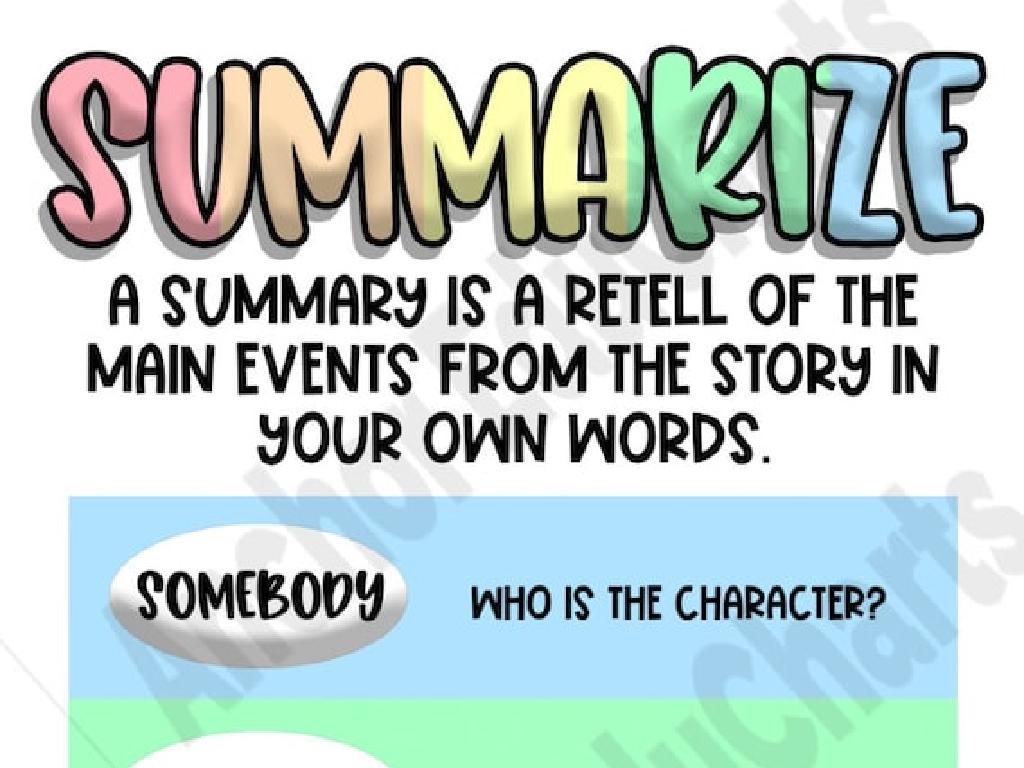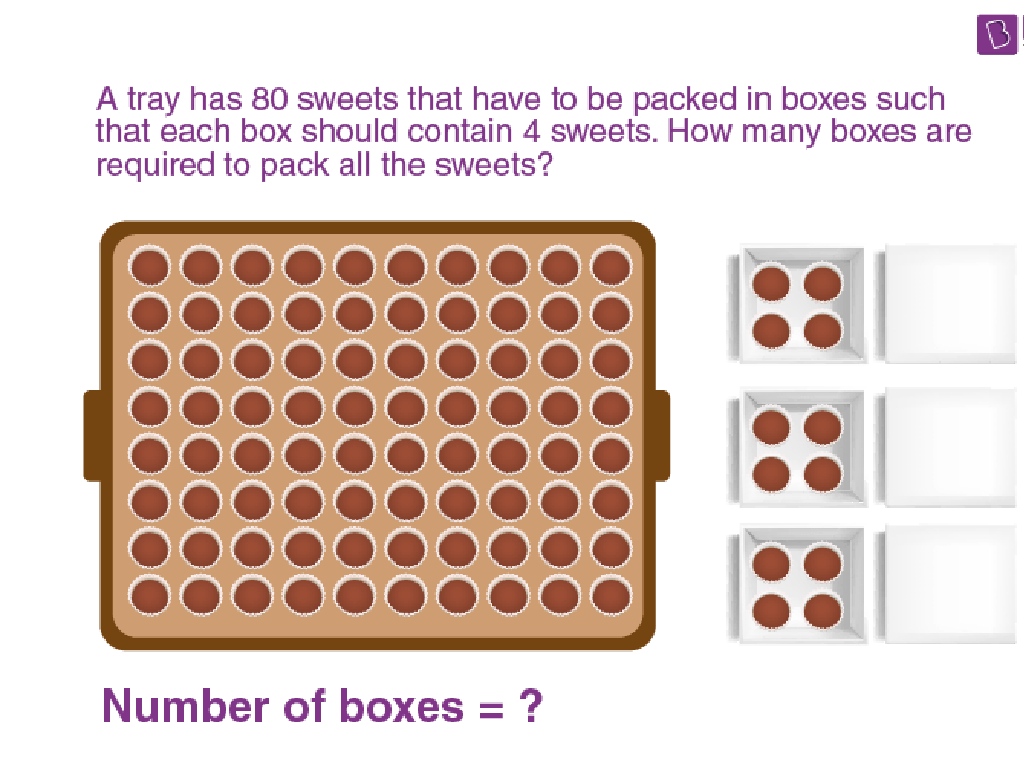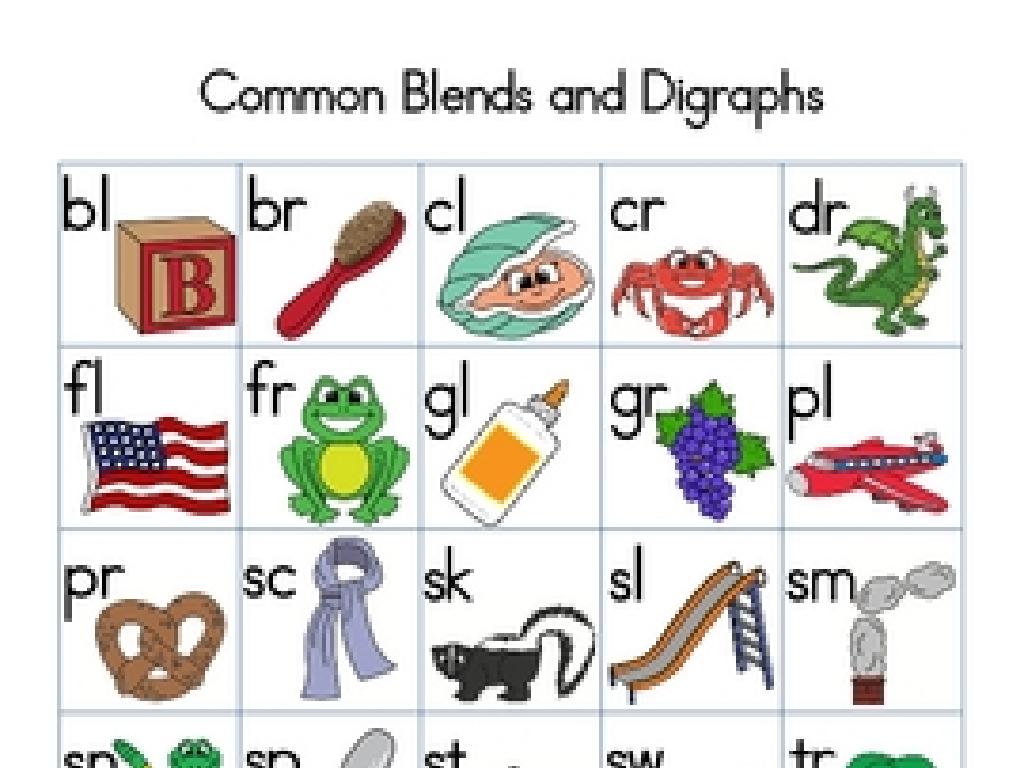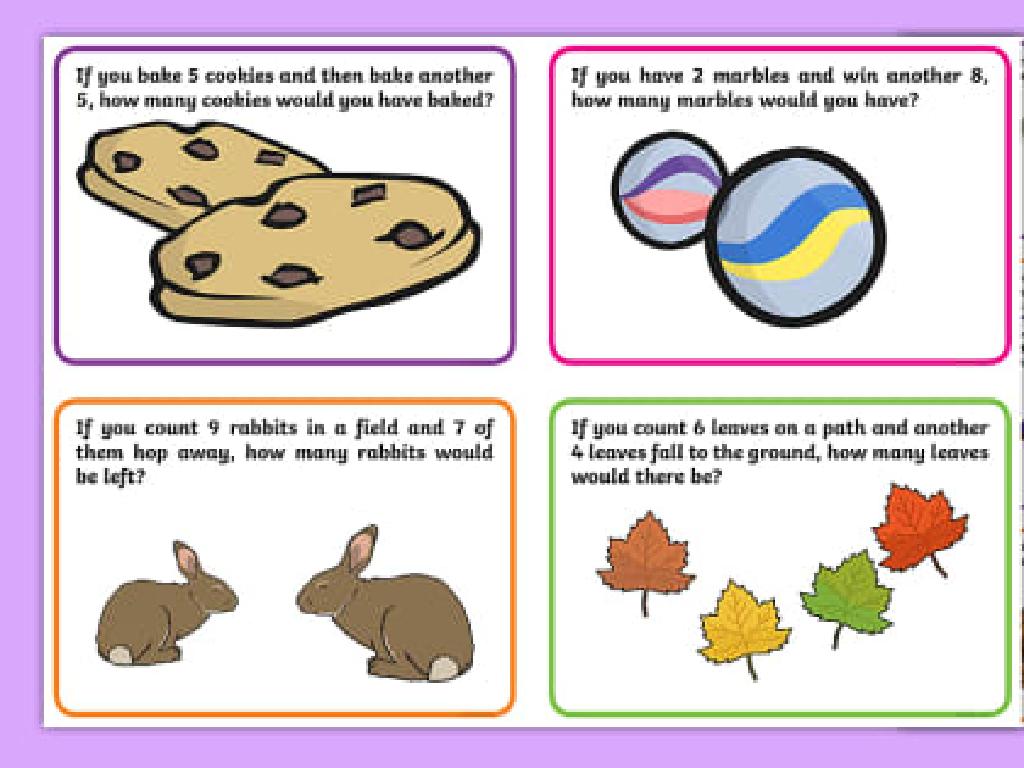Convert Improper Fractions To Mixed Numbers
Subject: Math
Grade: Fourth grade
Topic: Mixed Numbers
Please LOG IN to download the presentation. Access is available to registered users only.
View More Content
Converting Improper Fractions to Mixed Numbers
– What are mixed numbers?
– A whole number and a fraction combined, like 1 3/4
– Converting improper fractions
– Divide the numerator by the denominator
– The importance of this skill
– Helps in math problems & understanding quantities
– Real-life applications
– Used in cooking, measuring, and time management
|
This slide introduces the concept of mixed numbers and the process of converting improper fractions to mixed numbers, which is a crucial skill in mathematics. Understanding mixed numbers allows students to better grasp the concept of parts of a whole and is essential for performing higher-level math operations. Converting improper fractions helps in simplifying expressions and solving problems more efficiently. In real life, this skill is used in various scenarios such as cooking, where recipes require measurements in mixed numbers, or in time management, where one may need to calculate durations in hours and minutes. Encourage students to think of situations where they have encountered mixed numbers in their daily lives.
Understanding Mixed Numbers
– Define mixed numbers
– A whole number and a fraction combined, like 1 3/4
– Mixed numbers in daily life
– Examples: 1 1/2 hours of play, 2 1/3 cups of flour
– Mixed vs. improper fractions
– Mixed numbers show whole parts and extra pieces, improper fractions have a numerator larger than the denominator
– Converting improper to mixed
|
Begin by defining mixed numbers as the combination of a whole number and a fraction, ensuring students understand the concept of having ‘whole’ and ‘part’ in one number. Provide relatable examples such as time spent playing or ingredients in recipes to illustrate mixed numbers in contexts familiar to fourth graders. Clarify the difference between mixed numbers and improper fractions by highlighting that mixed numbers include whole parts explicitly, whereas improper fractions indicate ‘extra’ parts as a fraction where the numerator is larger than the denominator. Teach students the process of converting improper fractions to mixed numbers by dividing the numerator by the denominator to find the whole number, and using the remainder as the new numerator of the fraction part.
Understanding Improper Fractions
– Define an improper fraction
– A fraction where the numerator is greater than the denominator, e.g., 7/4
– Numerator vs. denominator
– Top number is numerator, bottom number is denominator
– Examples of improper fractions
– 9/5, 11/3, and 7/4 are all improper fractions
– Converting to mixed numbers
– Divide the numerator by the denominator to convert
|
This slide introduces students to improper fractions, which are fractions where the numerator (the top number) is larger than the denominator (the bottom number). Start by explaining the terms numerator and denominator. Provide clear examples of improper fractions to help students identify them. Then, demonstrate how to convert an improper fraction to a mixed number by dividing the numerator by the denominator. The quotient will be the whole number part, and the remainder will be the fraction part of the mixed number. Encourage students to practice with additional examples.
Converting Improper Fractions to Mixed Numbers
– Divide numerator by denominator
– If you have 7/4, divide 7 by 4.
– Record the whole number result
– The result of division is the whole number part.
– Place the remainder over the denominator
– The remainder becomes the new numerator.
– Combine the whole number and fraction
– A mixed number has a whole part and a fraction part.
|
This slide outlines the steps to convert an improper fraction, where the numerator is larger than the denominator, into a mixed number. Start by dividing the numerator by the denominator to find the whole number part. Next, write down the whole number. Then, take any remainder from the division and write it as the numerator over the original denominator to form the fractional part. Finally, combine these two parts to form the mixed number. For example, with 7/4, dividing 7 by 4 gives us 1 with a remainder of 3, so the mixed number is 1 3/4. Encourage students to practice this process with different improper fractions to become comfortable with the conversion.
Let’s Practice Together: Converting Improper Fractions
– Convert 7/4 to a mixed number
– 7/4 is 1 3/4 because 4 goes into 7 once with 3 left over
– Convert 9/5 to a mixed number
– 9/5 is 1 4/5 because 5 goes into 9 once with 4 left over
– Step-by-step class walkthrough
– Understanding through practice
|
This slide is designed for a class activity where students will learn to convert improper fractions to mixed numbers. Start with the example 7/4. Explain that since 4 goes into 7 once with a remainder of 3, the mixed number is 1 3/4. Repeat the process with 9/5, where 5 goes into 9 once with a remainder of 4, resulting in 1 4/5. Walk through these examples step by step with the class, ensuring that students understand how to divide the numerator by the denominator to find the whole number and the remainder for the new fraction part. Encourage students to participate and solve these examples together. After the walkthrough, allow students to practice with additional examples to solidify their understanding.
Your Turn to Try: Converting Fractions
– Convert 11/3 to a mixed number
– 11/3 is 3 whole ones and 2/3 left over
– Convert 14/6 to a mixed number
– 14/6 simplifies to 2 whole ones and 2/6
– Work individually or in pairs
– Solve and explain your answers
– Show your work on paper and be ready to discuss
|
This slide is an activity for students to practice converting improper fractions to mixed numbers. Provide clear instructions and ensure they understand the process of how many times the denominator can fit into the numerator to find the whole number, and then what remains becomes the fractional part. Encourage students to work through these problems either on their own or with a partner to foster collaboration. After completing the problems, they should be prepared to explain their reasoning and how they arrived at their answers. As a teacher, circulate the room to offer guidance and support where needed. Possible variations of the activity could include using visual aids, manipulatives, or creating a game where students race to convert fractions.
Class Activity: Fraction Art
– Create mixed number art pieces
– Use colored papers for mixed numbers
– Each color represents a different mixed number, like 1 1/2 or 2 1/3
– Share your art with the class
– Explain your mixed numbers
– Tell us how you made improper fractions into mixed numbers
|
This activity is designed to help students understand mixed numbers in a fun and creative way. Provide students with various colors of paper and instruct them to cut the paper into pieces that represent different mixed numbers. For example, a full sheet could represent ‘1’, and a half sheet could represent ‘1/2’, combining them to create ‘1 1/2’. Encourage creativity in their art creation. After completing their art, students will present their artwork to the class and explain the mixed numbers they used, reinforcing their understanding of converting improper fractions to mixed numbers. Possible variations of the activity could include creating a collage, a paper mosaic, or a layered paper sculpture. This hands-on experience will help solidify the concept of mixed numbers in a memorable way.
Converting Improper Fractions: Review & Homework
– Recap conversion steps
– Divide numerator by denominator, write the quotient with the remainder over the original denominator.
– Importance of conversion skills
– Helps in understanding parts of a whole in everyday life, like cooking or measuring.
– Homework: Find real-life mixed numbers
– Look around at home or outside, like in cooking recipes or measuring lengths.
|
As we wrap up today’s lesson, let’s review the steps to convert improper fractions to mixed numbers. Remember, the numerator (top number) is divided by the denominator (bottom number), and the result is a whole number with a fraction (the remainder over the original denominator). Understanding this conversion is crucial as it applies to many real-world situations, such as cooking, where measurements often need to be precise. For homework, students should find and write down three examples of mixed numbers from their environment. This could be from cooking measurements, distances, or even time spent on activities. Encourage them to share their findings in the next class to discuss how mixed numbers are used in everyday life.





